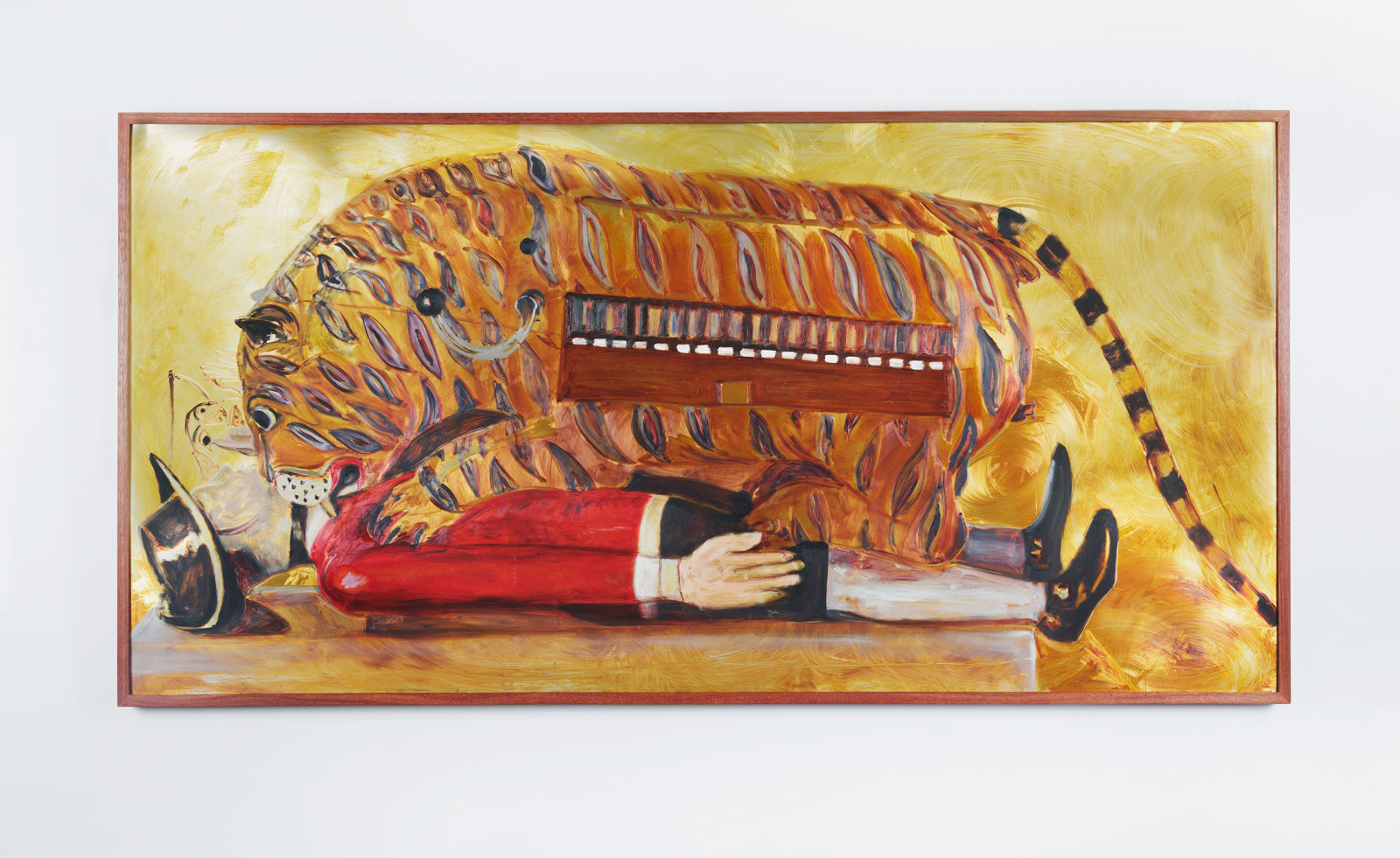
Exhibitionism, the inaugural showcase at Rajiv Menon Contemporary’s new flagship gallery in Hollywood, delves into the intricate terrain of privacy, visibility, and the fluid boundaries of intimacy. Through works that navigate the erotic, the domestic, the personal, and the fantastical, the featured artists reflect on the duality of being seen—examining both the allure and the discomfort of attention. The South Asian artists grapple with the delicate line between public exposure and private desire, exploring a complex relationship with visibility in the age of attention.

Bhasha Chakrabarti, Strange Ecstasy I, 2023, خلسھ عجیب,
'For the inaugural exhibition, I wanted to take on something that is deeply universal while centring South Asian diasporic perspectives. Exhibitionism raises larger questions about what gets to be exhibited, by whom, how, and where,' says gallery founder Rajiv Menon.
The show opens with a striking, to-scale painting of Tipu’s Tiger—a six-foot-long musical automaton depicting a tiger mauling an English soldier, now housed in the V&A Museum—by Bhasha Chakrabarti. Known for reclaiming objects taken from India that now reside in British institutions, Chakrabarti’s work is a direct confrontation with colonial power dynamics. Elsewhere, her self-portrait mid-orgasm Strange Ecstasy, visible from the street, unsettles the fragile boundary between public and private. Here, intimacy is both confrontation and spectacle, asking: When does vulnerability become excess? Who dictates its terms? And what happens when desire—so often commodified—refuses to soften under the consumer’s gaze, instead demanding to be reckoned with?
The 19 featured artists range from emerging voices to established figures, including Chitra Ganesh, Sunil Gupta, and Jagannath Panda—artists collected by MoMA, SFMOMA, the Whitney, Tate Britain, and more. Tarini Sethi arrives fresh off her Vortic Prize win at Untitled Miami, while Mustafa Mohsin, Faiza Butt, and Joya Mukerjee Logue make their West Coast debut, and Raghav Babbar presents his first commercial gallery exhibition in the United States.
'I was interested in how artists explore concealment and the tropes of masking and code-switching, of attention and vulnerability—how depictions of eroticism, grounded in a legacy of traditional South Asian art forms, keep getting reimagined as contemporary.'
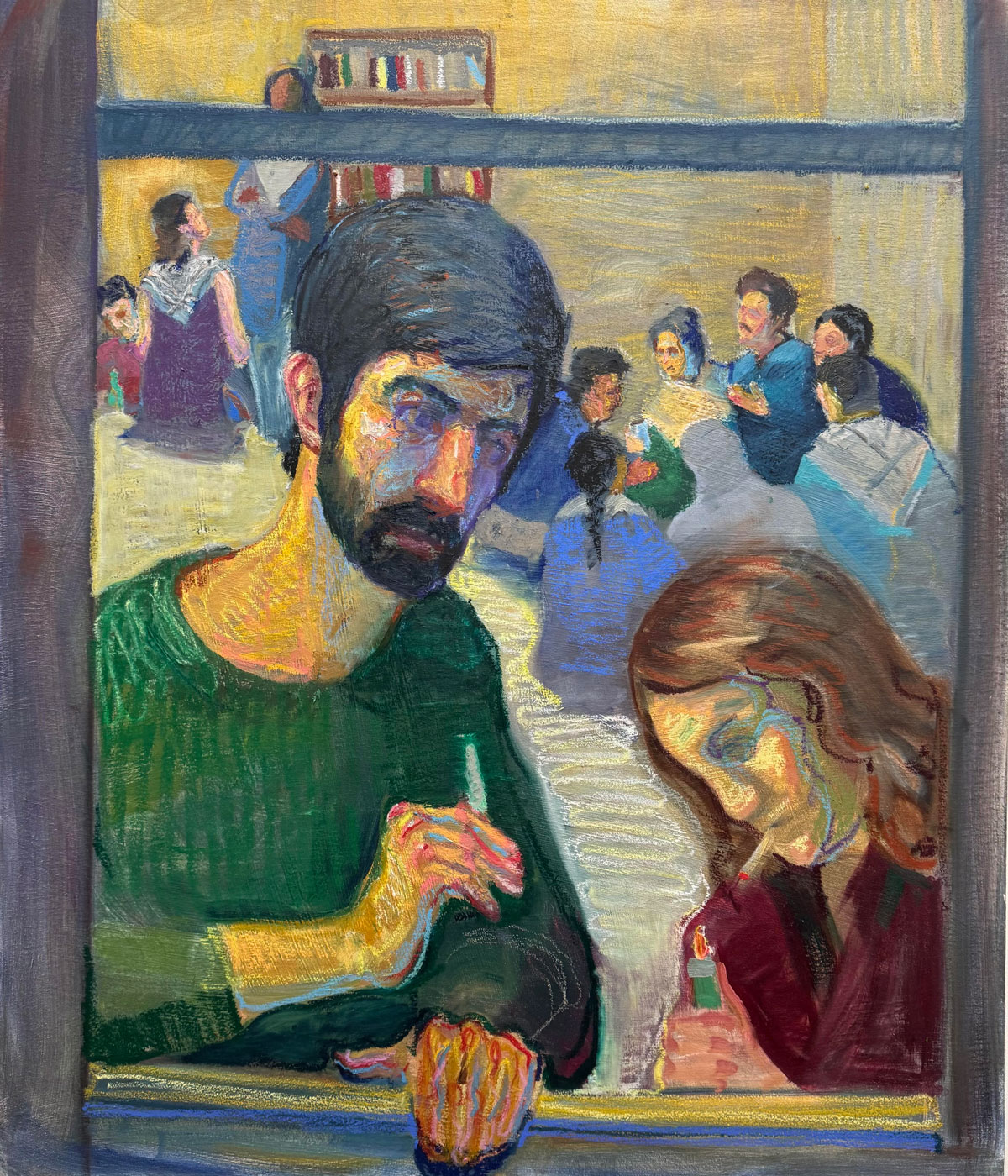
Mustafa Mohsin, House party
Skin is both intimacy and exhibition—a surface where touch becomes desire, where light catches the gaze, where folds accumulate history. At Exhibitionism, artists return to skin as both material and metaphor. Shradha Kochhar archives bodily inheritance in wool, stitching skin as memory. Chitra Ganesh renders it porous, where myth, universe, and self are inseparable but for a membrane. Sanie Bokhari inhabits skins not her own, fusing with feline creatures, unsettling the limits of species, identity, and embodiment.
In South Asia, caste clings to skin as inheritance; in the West, race marks it for consumption or refusal. As border, as burden, as site of longing—skin resists containment, but never its politics. 'The question of caste and class is embedded in the American immigration system,' Menon notes. 'Post-1965, U.S. immigration laws engineered privilege, favouring a very specific type of South Asian immigrant—often upper-caste, upper-class—who then came to represent the diaspora.' In September 2023, California became the first U.S. state to legally ban caste discrimination, adding caste as a protected category in its anti-discrimination laws alongside gender, race, religion, and disability. The recognition of caste oppression beyond South Asia underscores its endurance across borders and generations.
Receive our daily digest of inspiration, escapism and design stories from around the world direct to your inbox.
Rajiv Menon is vexed by the colonial gaze—both Western and upper-caste—and how it produces and reproduces South Asian identity. Western narratives have long relied on a narrow set of tropes to construct this identity: Bollywood opulence, bindis and bling, poverty porn, the brown-skin fetish, the sing-song accent, the spectacle of arranged marriage. These media-driven clichés flatten a vast, heterogeneous culture into something exotic, distant, and consumable, often conflating South Asia with a monolithic ‘Indianness.’
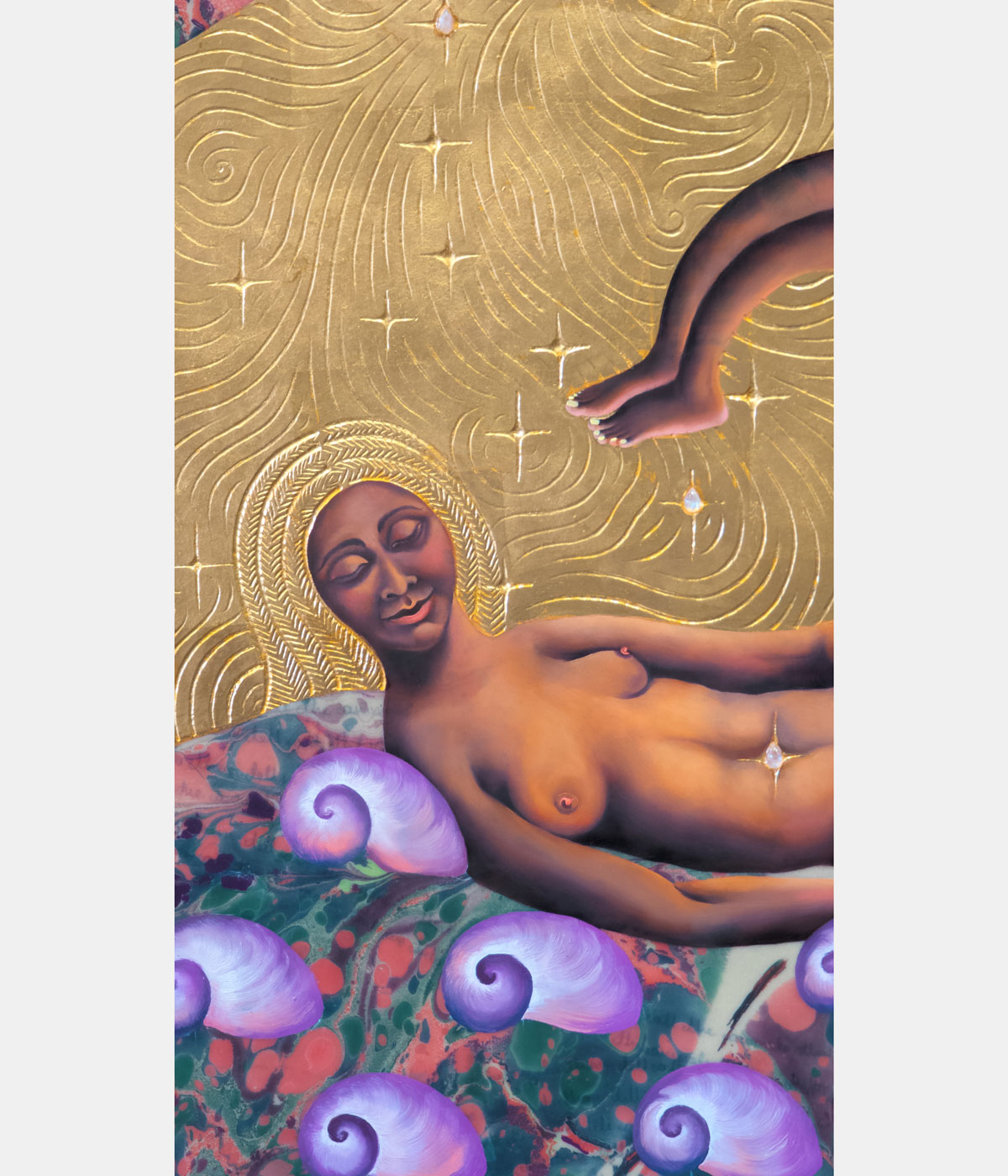
Sahana Ramakrishnan, The Spiral Woman, 2025
At Rajiv Menon Contemporary, the goal is not just to resist these narratives but to rewrite the terms entirely, embedding South Asian artists within the broader cultural fabric of the United States. 'I want people to walk in and not say, "Oh, this doesn’t look Indian," but rather, "I am rethinking what I have always thought about Indianness."'
This effort is not only about reclaiming representation from the West but also about challenging how South Asians themselves have internalised these limitations. 'The diaspora often treats culture as something to be preserved rather than lived, something to safeguard rather than a force to be embodied.' But culture is not static—it is not a monument to be protected. It is contemporary by definition, shifting, absorbing, evolving, and alive.
The ‘model minority’ myth—largely shaped by upper-caste, upper-class migrants—has often reinforced its own hierarchies, replicating structures of privilege and exclusion across borders. More recently, consumer culture (both market-driven and digital) has become a significant indicator of these hierarchies, flattening complexity in the name of relatability. 'Relatability is a driving force of demand-vulnerability,' Menon explains. 'When you engage with the gallery, I don’t want you to just see yourself. I want you to encounter something you’ve never seen before—to grasp the multiplicity of South Asianness in a way that makes the survival of ‘flat’ culture impossible.'
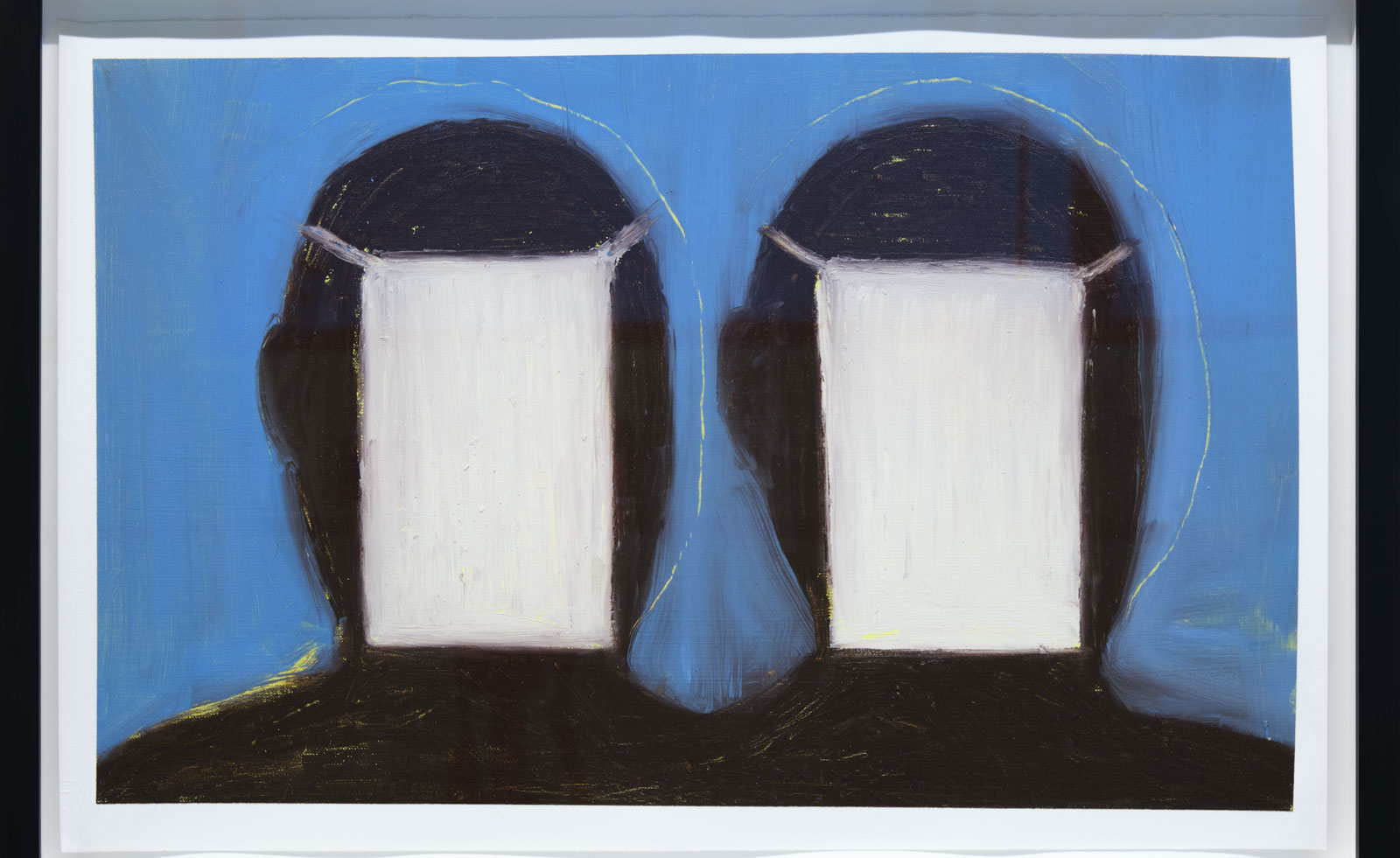
Aman Aheer, Face, 2024
At its core, Exhibitionism asserts that South Asian culture has never been separate from modernity—it is, and has always been, contemporary. RMC’s programming sets forth an exciting, robust, and truly subversive vision for a new cultural institution in Hollywood—one that refuses to perform palatability for a Western audience or uphold nostalgia for the diaspora, instead carving space for South Asian artists to exist in their full, radical complexity.
Exhibitionism at Rajiv Menon Contemporary gallery runs until 30 March 2025. See more of Los Angeles newest art exhibitions
Aastha D. (she/they) is an independent scholar, essayist, and educator. They have degrees in architecture and its critical, curatorial, and conceptual practices. She founded the magazine Proseterity, and is also managing editor of the working group Insurgent Domesticities at the Center for the Study of Social Difference (CSSD) of Columbia University
-
 The Testament of Ann Lee brings the Shaker aesthetic to the big screen
The Testament of Ann Lee brings the Shaker aesthetic to the big screenDirected by Mona Fastvold and featuring Amanda Seyfried, The Testament of Ann Lee is a visual deep dive into Shaker culture
-
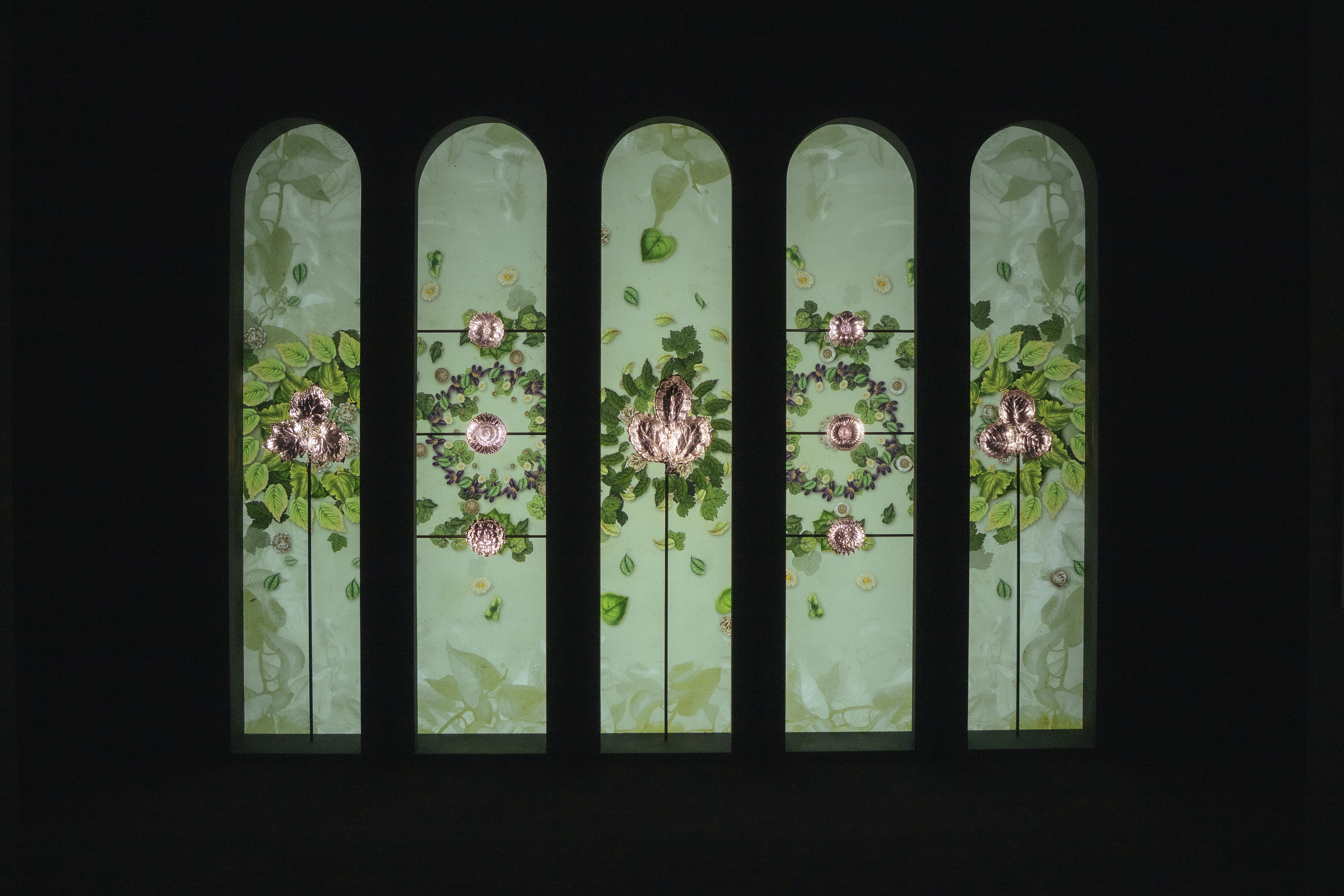 Dive into Buccellati's rich artistic heritage in Shanghai
Dive into Buccellati's rich artistic heritage in Shanghai'The Prince of Goldsmiths: Buccellati Rediscovering the Classics' exhibition takes visitors on an immersive journey through a fascinating history
-
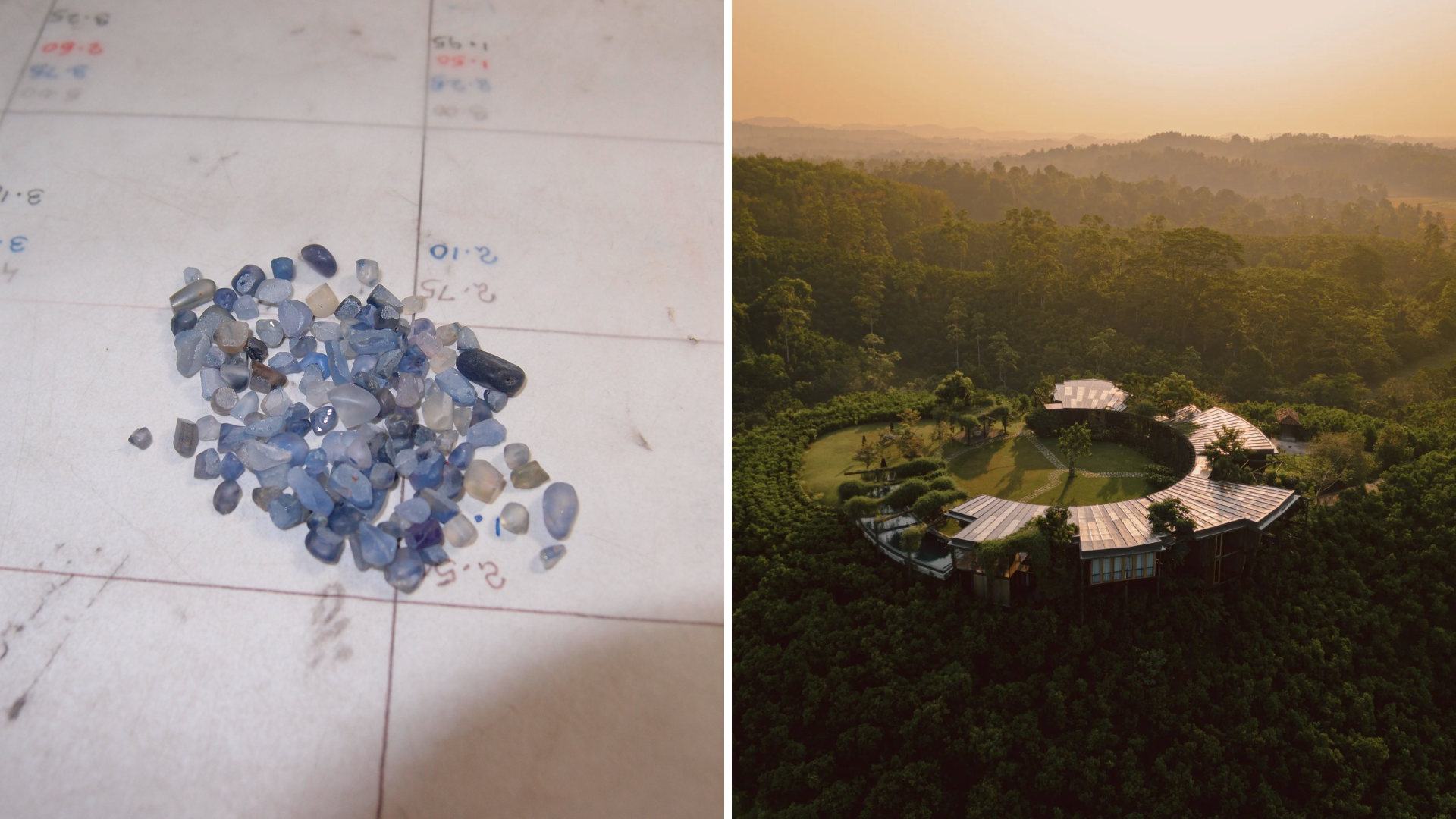 Love jewellery? Now you can book a holiday to source rare gemstones
Love jewellery? Now you can book a holiday to source rare gemstonesHardy & Diamond, Gemstone Journeys debuts in Sri Lanka in April 2026, granting travellers access to the island’s artisanal gemstone mines, as well as the opportunity to source their perfect stone
-
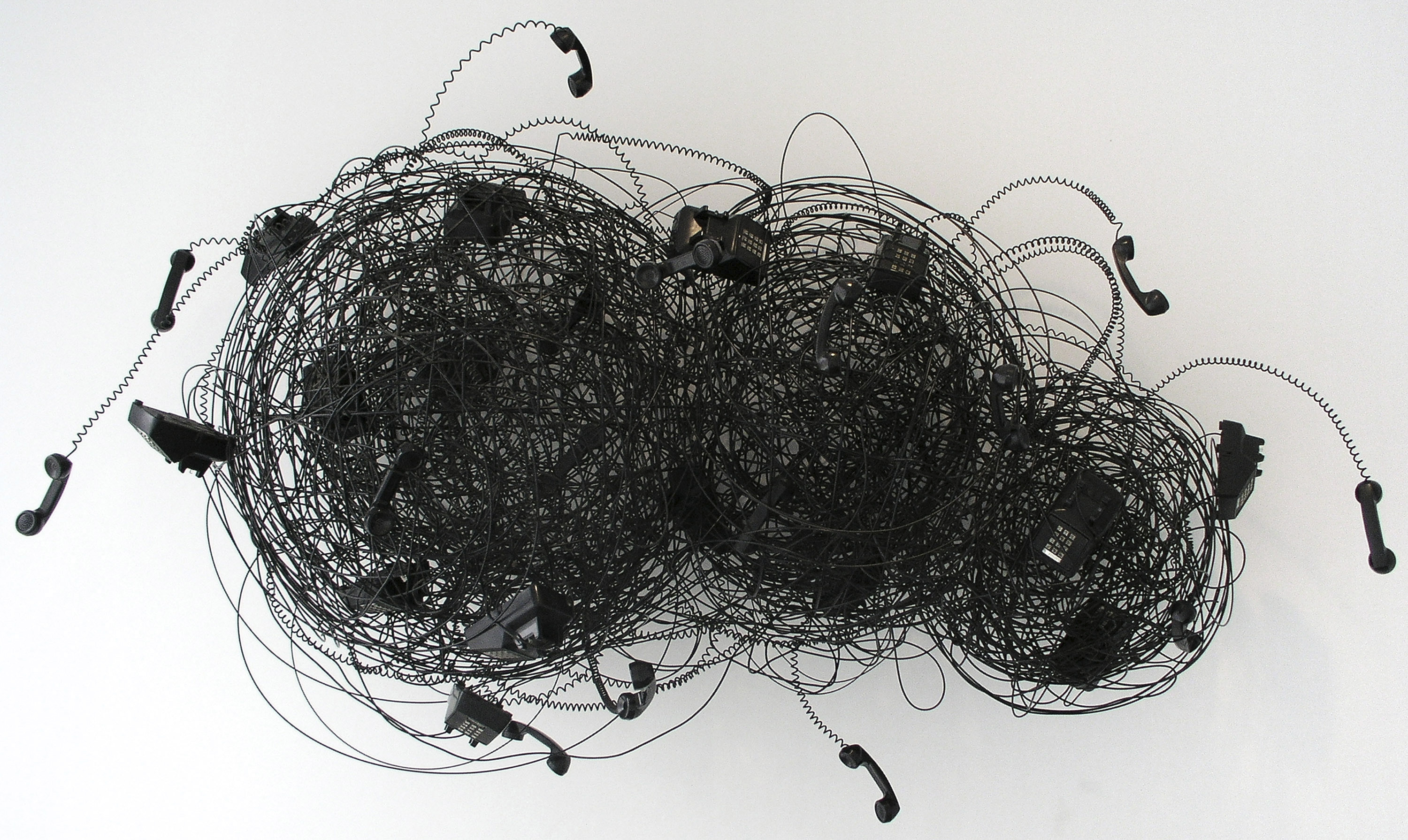 Robert Therrien's largest-ever museum show in Los Angeles is enduringly appealing
Robert Therrien's largest-ever museum show in Los Angeles is enduringly appealing'This is a Story' at The Broad unites 120 of Robert Therrien's sculptures, paintings and works on paper
-
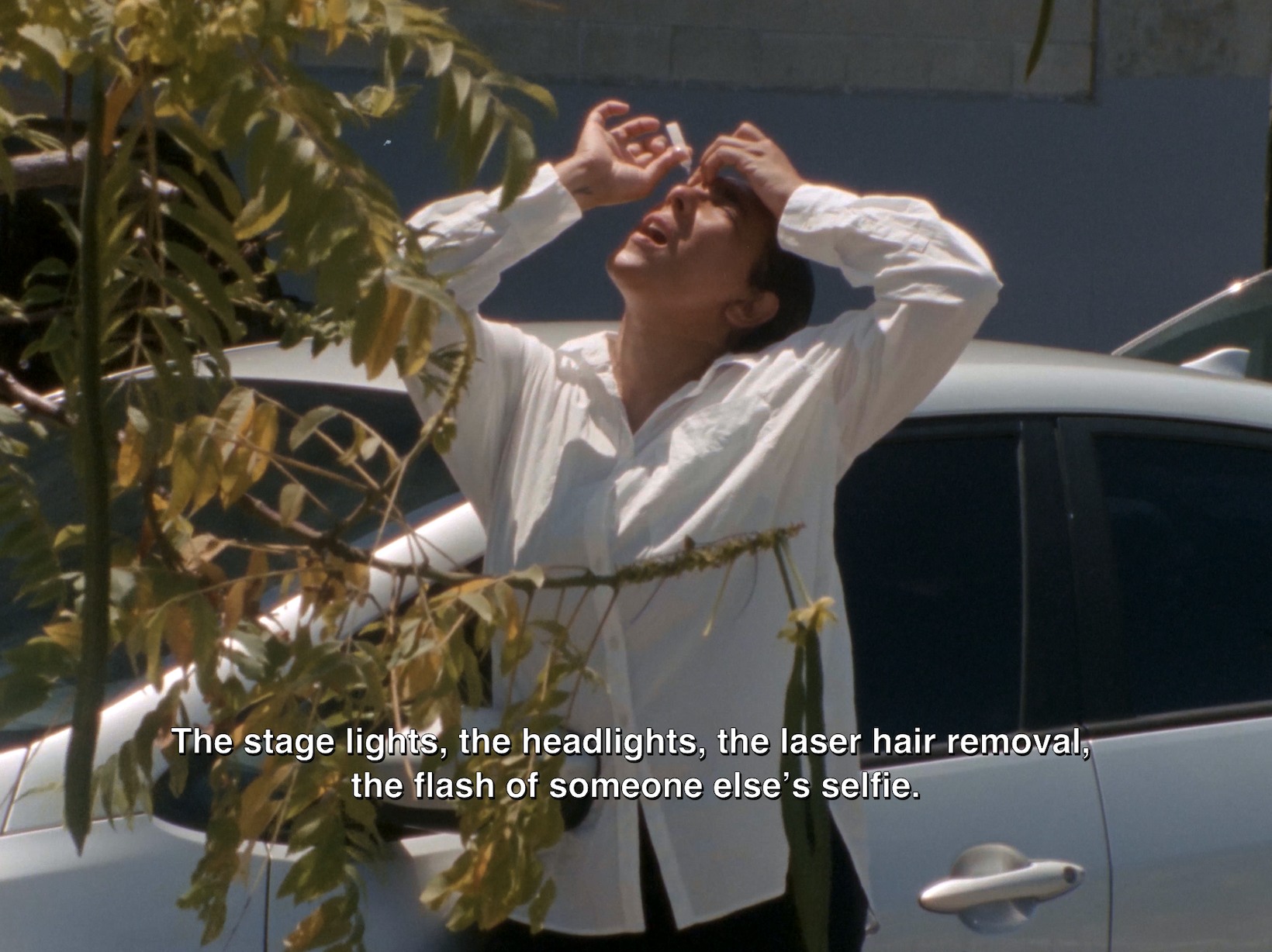 The Hammer Museum in Los Angeles launches the seventh iteration of its highly anticipated artist biennial
The Hammer Museum in Los Angeles launches the seventh iteration of its highly anticipated artist biennialOne of the gallery's flagship exhibitions, Made in LA showcases the breadth and depth of the city's contemporary art scene
-
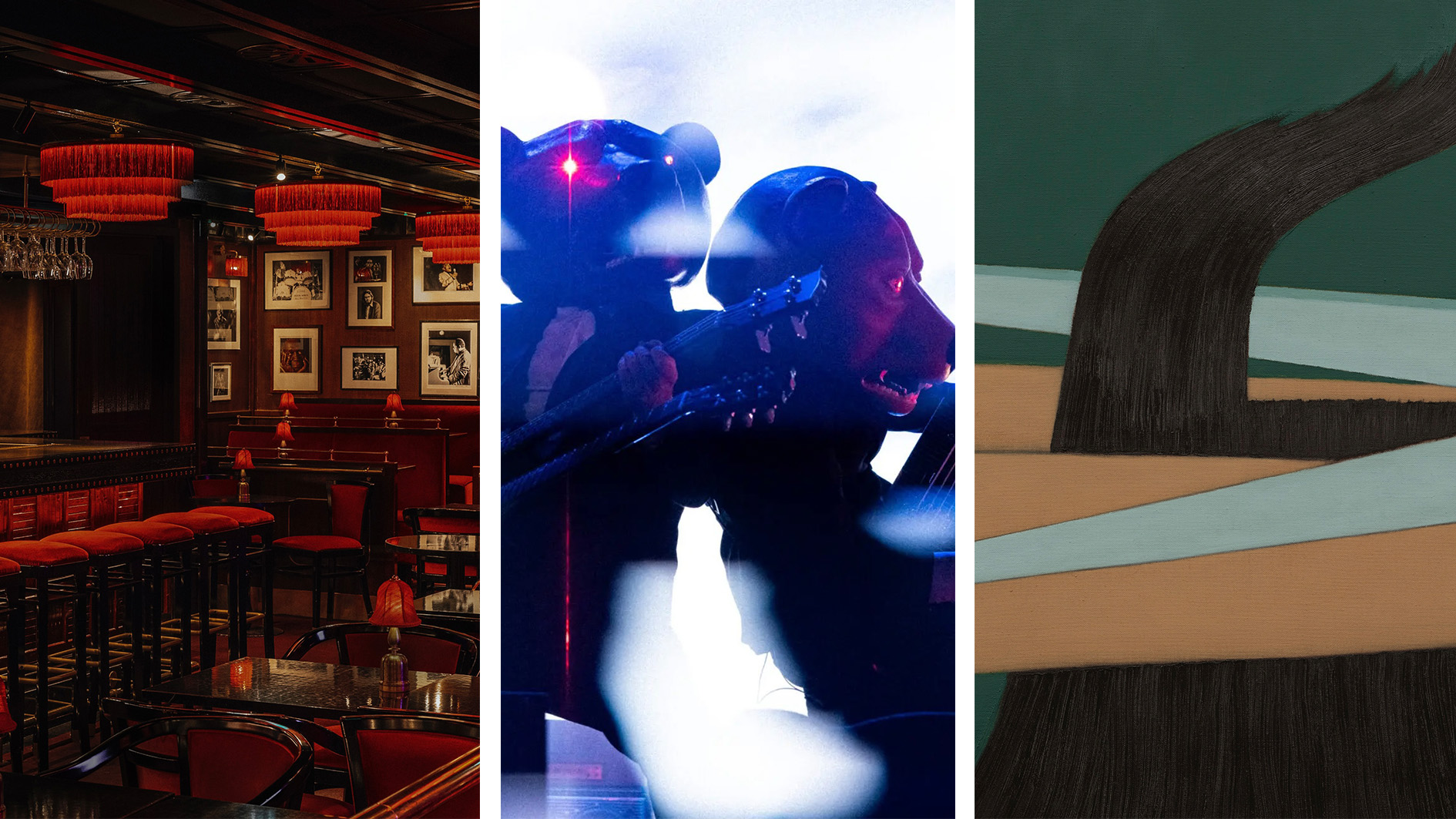 Out of office: the Wallpaper* editors’ picks of the week
Out of office: the Wallpaper* editors’ picks of the weekAnother week, another flurry of events, opening and excursions showcasing the best of culture and entertainment at home and abroad. Catch our editors at Scandi festivals, iconic jazz clubs, and running the length of Manhattan…
-
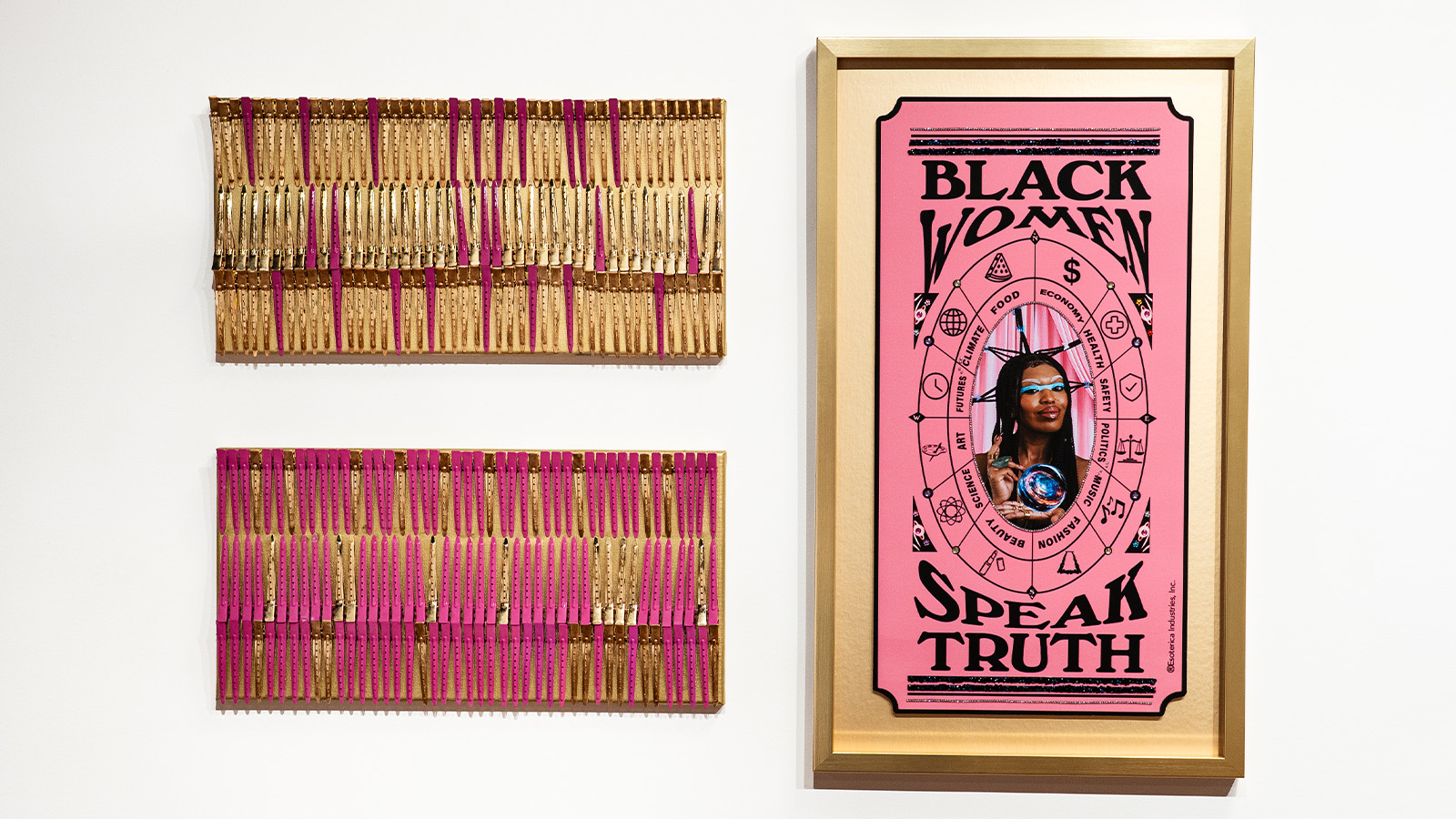 The spread of Butter: the Black-owned art fair where artists see all the profits
The spread of Butter: the Black-owned art fair where artists see all the profitsThe Indianapolis-based art fair is known for bringing Black art to the forefront. As it ventures out of state to make its Los Angeles debut, we speak with founders Mali and Alan Bacon to find out more
-
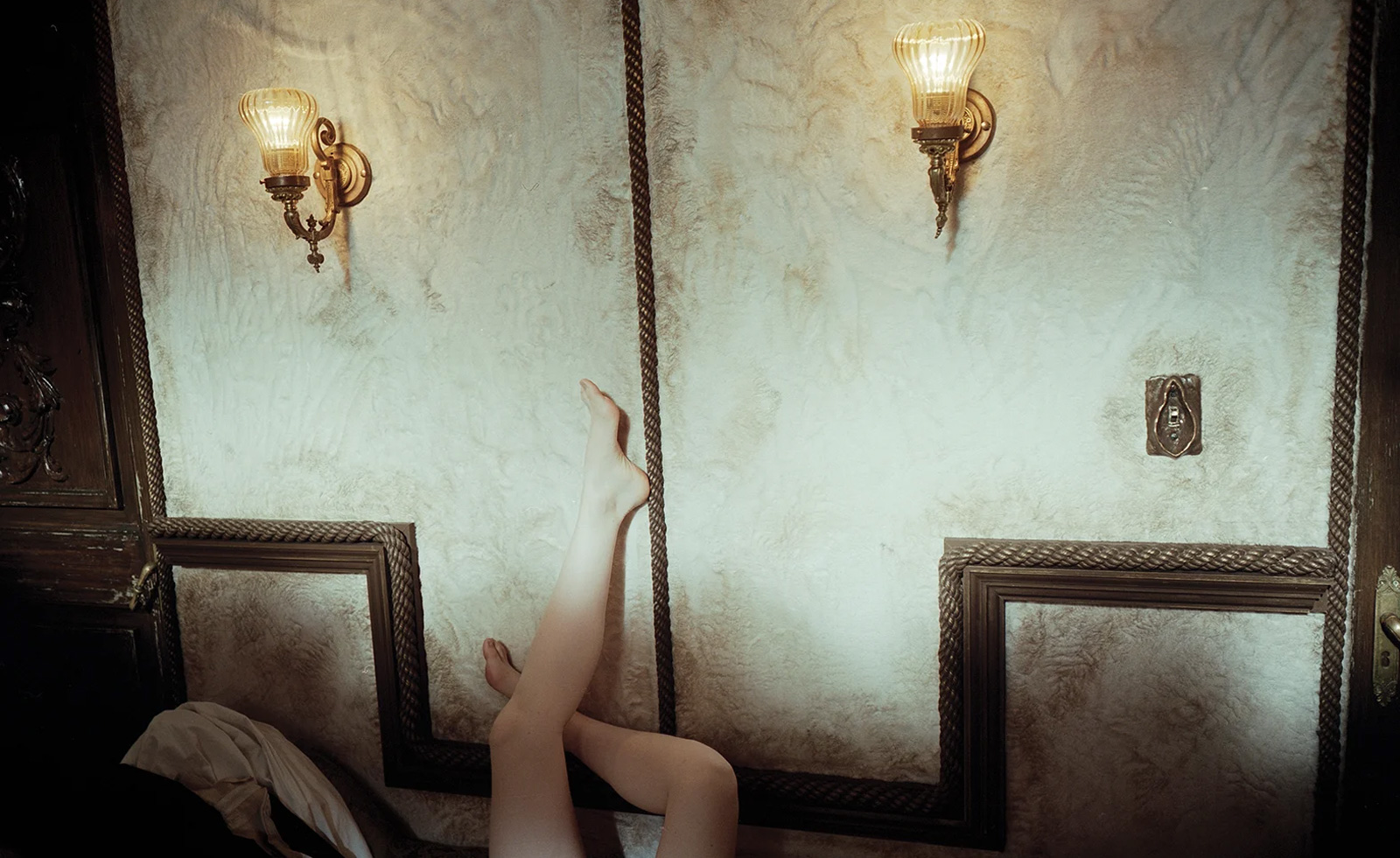 Unlike the gloriously grotesque imagery in his films, Yorgos Lanthimos’ photographs are quietly beautiful
Unlike the gloriously grotesque imagery in his films, Yorgos Lanthimos’ photographs are quietly beautifulAn exhibition at Webber Gallery in Los Angeles presents Yorgos Lanthimos’ photography
-
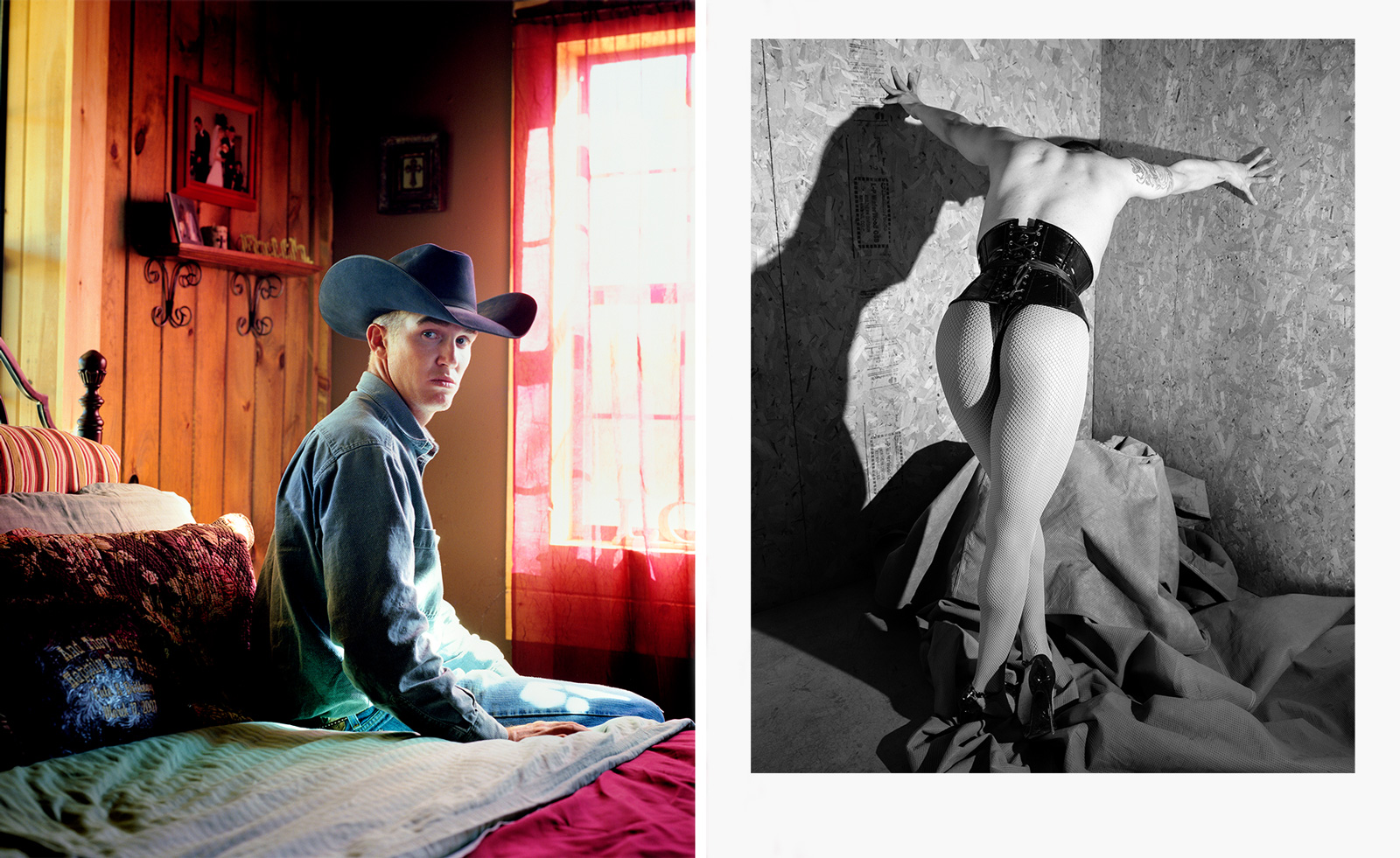 Cowboys and Queens: Jane Hilton's celebration of culture on the fringes
Cowboys and Queens: Jane Hilton's celebration of culture on the fringesPhotographer Jane Hilton captures cowboy and drag queen culture for a new exhibition and book
-
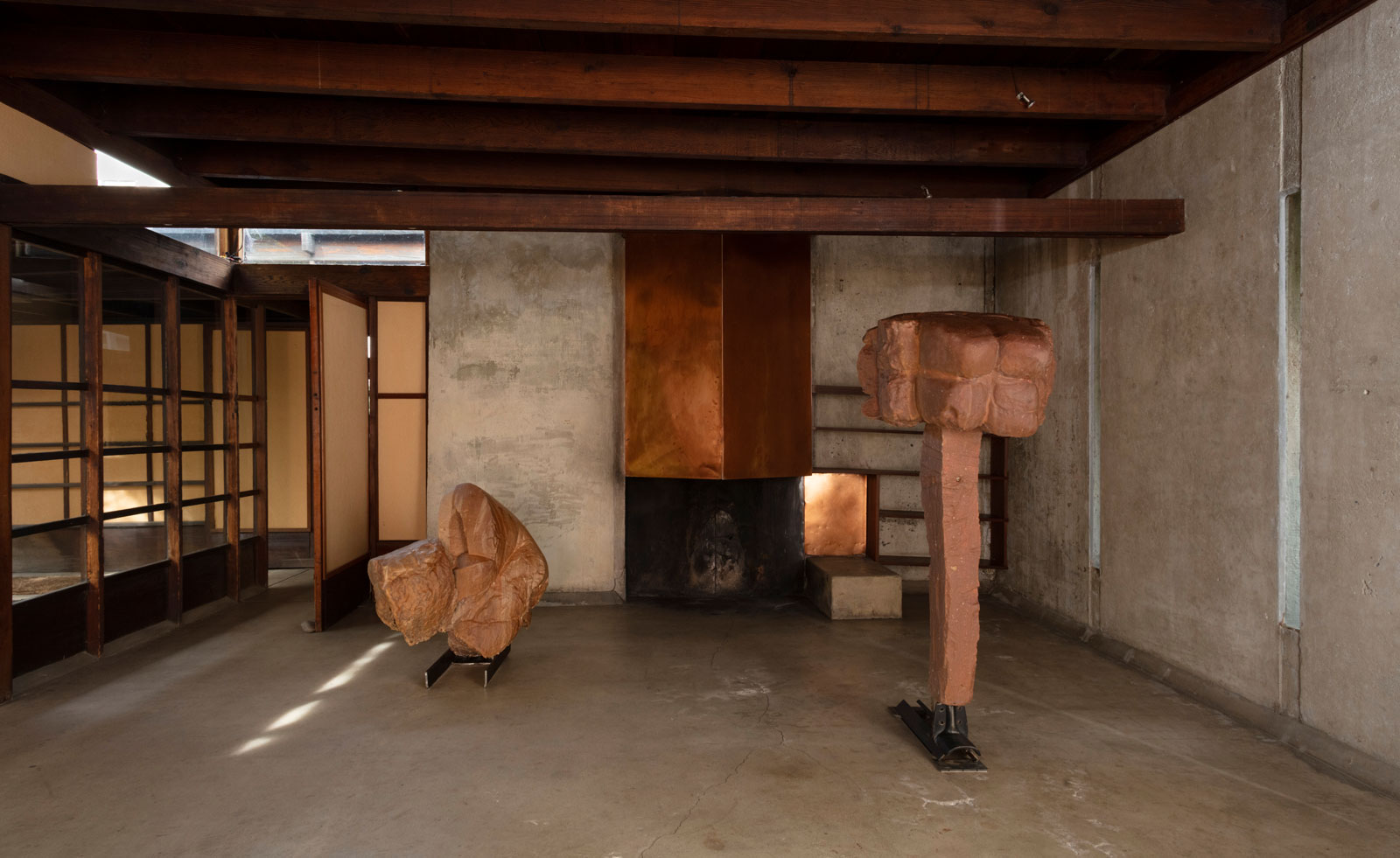 Helmut Lang showcases his provocative sculptures in a modernist Los Angeles home
Helmut Lang showcases his provocative sculptures in a modernist Los Angeles home‘Helmut Lang: What remains behind’ sees the artist and former fashion designer open a new show of works at MAK Center for Art and Architecture at the Schindler House
-
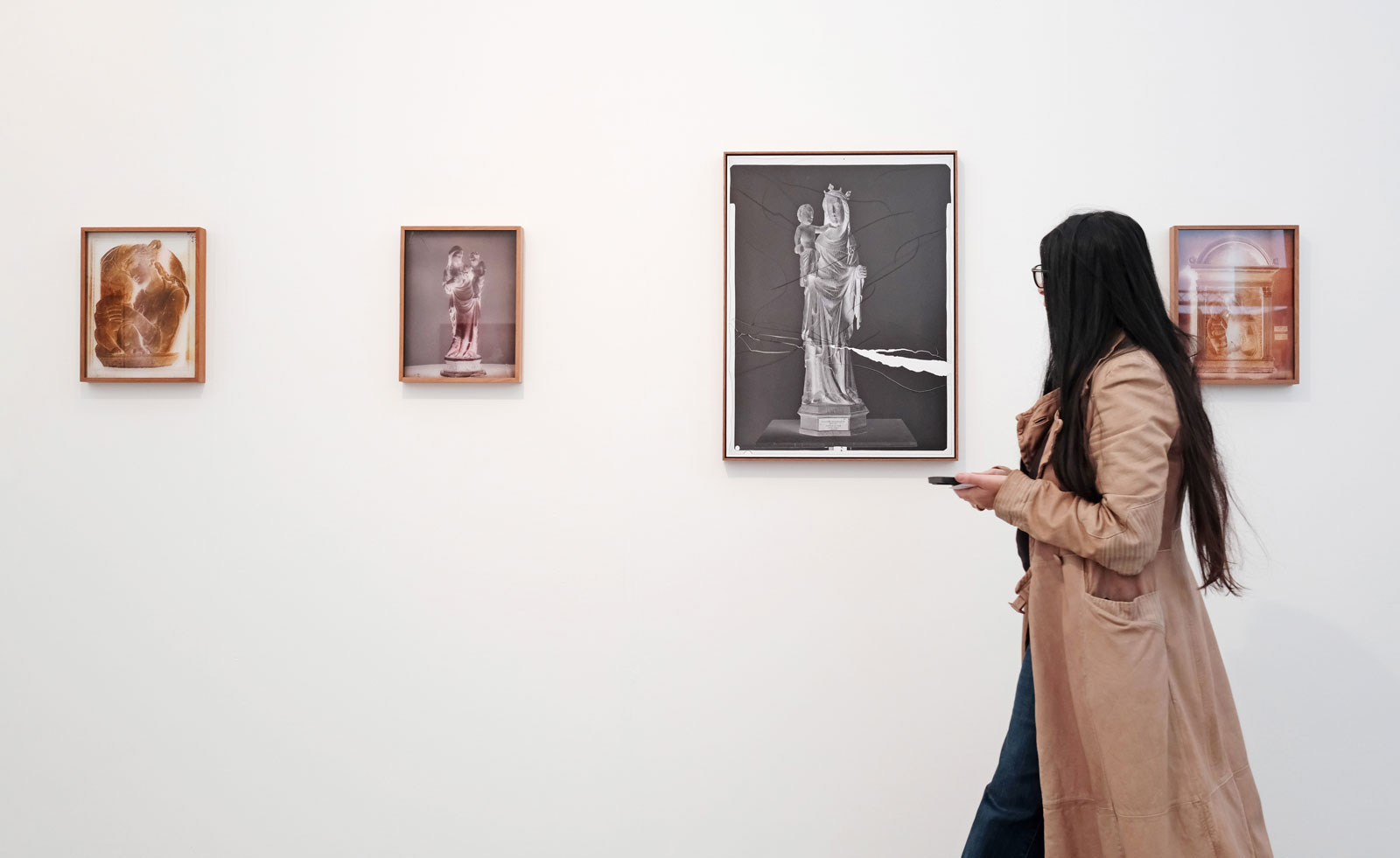 Don't miss these seven artists at Frieze Los Angeles
Don't miss these seven artists at Frieze Los AngelesFrieze LA returns for its sixth edition, running 20-23 February, showcasing over 100 galleries from more than 20 countries, as well as local staples featuring the city’s leading creatives